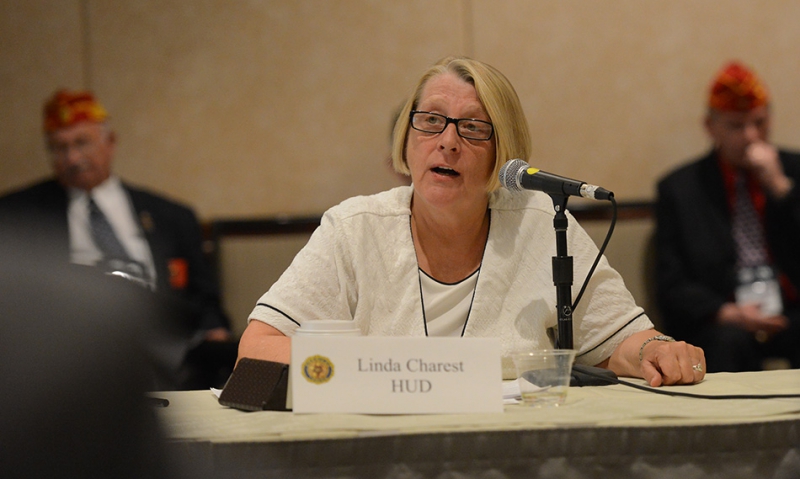
With the goal to end veterans homelessness by 2015, Homeless Veterans Roundtable panelists at national convention discuss successes to date.
In 2009, when President Barack Obama and former Department of Veterans Affairs Secretary Eric Shinseki began a nationwide initiative to end homelessness among veterans by 2015, there were nearly 200,000 homeless veterans on the streets, said John Driscoll, president and CEO of National Coalition for Homeless Veterans (NCHV) in Washington, D.C. With less than two years left to meet the goal, Driscoll said the numbers have now dropped to about 50,000 homeless veterans as of January 2014; a 6-percent decrease from January 2013.
“We have a service capacity to help 200,000 homeless veterans a year with housing. None of this was even in play five years ago,” Driscoll told Legionnaires attending the Homeless Veterans Roundtable, hosted by The American Legion's Veterans Employment & Education Commission during the organization's 96th National Convention in Charlotte, N.C., on Aug. 23. “This right here (pointing to a chart showing the decline) is why the president to this day and congressional leadership know that we can end this battle of veterans homelessness.”
Between the efforts of the NCHV and the Departments of Veterans Affairs and Housing & Urban Development (HUD), the decline in veterans homeless can be attributed to direct access to housing, health care, income security (employment and benefits counseling) and prevention (rapid re-housing and financial assistance).
Jeffery Doyle, network homeless coordinator for VA, said VA is trying to identify chronically homeless veterans – those who have been on the streets for more than a year – and how to best serve that population with prevention methods.
“The metaphor I have always heard about prevention is when you look at how to end homelessness, you build more housing and have more resources, such as financial assistance,” Doyle said. “Think of a bathtub with homeless veterans being the water. For so long we focused on making the drain bigger and bigger in effort to get them out of homelessness. The problem is that the faucet was always on. That’s what prevention does – it turns off that water.”
When it comes to prevention methods to end veterans homelessness, “the biggest thing a lot of cities need is landlords,” said Elisha Harig-Blaine, senior associate for National League of Cities in Washington, D.C. “There are not enough landlords out there willing to partner with cities to house homeless veterans. As ambassadors to your communities, go out and talk with property managers and realtors who have access to housing units and ask them to contribute to these efforts. It will make a dramatic impact on getting veterans into housing.
“We know that veterans homeless has been a part of the city landscape since the early 1980s. Unfortunately, it’s been viewed as there’s nothing to be done about it. What is great about the progress we are seeing now is that we are not only coming to believe, but we’re showing that that is not true.”
Linda Charest, base realignment closure coordinator for HUD, said, “HUD is all in for ending veterans homelessness by the end of 2015.” In the past year, Charest said HUD served nearly 10,000 chronically homeless veterans and 11,326 non-chronically homeless veterans.
“This would not have been possible without our collaboration with the Department of Labor and VA. Not to mention you (The American Legion),” said Charest, a member of Post 24 in Alexandria, Va. “When we provide housing vouchers, you make that house is a home by providing linens, cutlery, plates and furniture.”
In his closing remarks, Harig-Blaine stressed that “we will not have this level of resources from VA, Department of Labor and others on this issue again. We simply will not. This is a unique opportunity to show them that we are dedicated to our veterans. This is a once in a generation opportunity to really show that we can do this (end veterans homelessness by 2015).”
- Homeless Veterans

